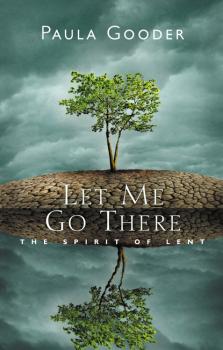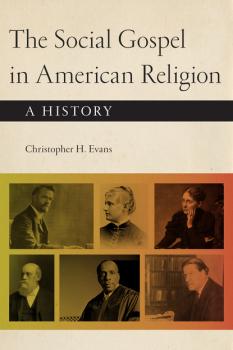Религиоведение
Различные книги в жанре РелигиоведениеAncient Christian Ecopoetics
In our age of ecological crisis, what insights—if any—can we expect to find by looking to our past? Perhaps, suggests Virginia Burrus, early Christianity might yield usable insights. Turning aside from the familiar specter of Christianity's human-centered theology of dominion, Burrus directs our attention to aspects of ancient Christian thought and practice that remain strange and alien. Drawn to excess and transgression, in search of transformation, early Christians creatively reimagined the universe and the human, cultivating relationships with a wide range of other beings—animal, vegetable, and mineral; angelic and demonic; divine and earthly; large and small. In Ancient Christian Ecopoetics , Burrus facilitates a provocative encounter between early Christian theology and contemporary ecological thought. In the first section, she explores how the mysterious figure of khora , drawn from Plato's Timaeus , haunts Christian and Jewish accounts of a creation envisioned as varyingly monstrous, unstable, and unknowable. In the second section, she explores how hagiographical literature queers notions of nature and places the very category of the human into question, in part by foregrounding the saint's animality, in part by writing the saint into the landscape. The third section considers material objects, as small as portable relics and icons, as large as church and monastery complexes. Ancient Christians considered all of these animate beings, simultaneously powerful and vulnerable, protective and in need of protection, lovable and loving. Viewed through the shifting lenses of an ancient ecopoetics, Burrus demonstrates how humans both loomed large and shrank to invisibility, absorbed in the rapture of a strange and animate ecology.
The Integrated Self
Well before his entry into the religious life in the spring of 386 C.E., Augustine had embarked on a lengthy comparison between teachings on the self in the philosophical traditions of Platonism and Neoplatonism and the treatment of the topic in the Psalms, the letters of St. Paul, and other books of the Bible. Brian Stock argues that Augustine, over the course of these reflections, gradually abandoned a dualistic view of the self, in which the mind and the body play different roles, and developed the notion of an integrated self, in which the mind and body function interdependently. Stock identifies two intellectual techniques through which Augustine effected this change in his thought. One, lectio divina , was an early Christian approach to reading that engaged both mind and body. The other was a method of self-examination that consisted of framing an interior Socratic dialogue between Reason and the individual self. Stock investigates practices of writing, reading, and thinking across a range of premodern texts to demonstrate how Augustine builds upon the rhetorical traditions of Cicero and the inner dialogue of Plutarch to create an introspective and autobiographical version of self-study that had little to no precedent. The Integrated Self situates these texts in a broad historical framework while being carefully attuned to what they can tell us about the intersections of mind, body, and medicine in contemporary thought and practice. It is a book in which Stock continues his project of reading Augustine, and one in which he moves forward in new and perhaps unexpected directions.
The Altar at Home
Displays of devout religious faith are very much in evidence in nineteenth-century sentimental novels such as Uncle Tom's Cabin and Little Women , but the precise theological nature of this piety has been little examined. In the first dedicated study of the religious contents of sentimental literature, Claudia Stokes counters the long-standing characterization of sentimental piety as blandly nondescript and demonstrates that these works were in fact groundbreaking, assertive, and highly specific in their theological recommendations and endorsements. The Altar at Home explores the many religious contexts and contents of sentimental literature of the American nineteenth century, from the growth of Methodism in the Second Great Awakening and popular millennialism to the developing theologies of Mormonism and Christian Science. Through analysis of numerous contemporary religious debates, Stokes demonstrates how sentimental writers, rather than offering simple depictions of domesticity, instead manipulated these scenes to advocate for divergent new beliefs and bolster their own religious authority. On the one hand, the comforting rhetoric of domesticity provided a subtle cover for sentimental writers to advance controversial new beliefs, practices, and causes such as Methodism, revivalism, feminist theology, and even the legitimacy of female clergy. On the other hand, sentimentality enabled women writers to bolster and affirm their own suitability for positions of public religious leadership, thereby violating the same domestic enclosure lauded by the texts. The Altar at Home offers a fascinating new historical perspective on the dynamic role sentimental literature played in the development of innumerable new religious movements and practices, many of which remain popular today.
I See You There
I See You There Love, Christina XOXOXO , is the incredible true story of Christina Ann Best, who survived the odds stacked against her at birth, of not only living but thriving. Miracles abounded in Christina’s young life, including a trip to heaven. Then, at the age of twenty-eight, amidst tremendous health issues, Jesus opens Christina’s eyes to Himself and heaven as well. Christina’s mother, Missy Kistner, tells us her personal journey with her daughter that will profoundly inspire your bond with family and your Christian walk with Jesus.
The Healing Power of the Santuario de Chimayó
Winner, 2018 Paul J. Foik Award for Best Book on Catholic History in the American Southwest, presented by the Texas Catholic Historical Society The remarkable history of the Santuario de Chimayó, the church whose world-renowned healing powers have drawn visitors to its steps for centuries. Nestled in a valley at the feet of the Sangre de Cristo Mountains of New Mexico, the Santuario de Chimayó has been called the most important Catholic pilgrimage site in America. To experience the Santuario’s miraculous healing dirt, pilgrims and visitors first walk into the cool, adobe church, proceeding up an aisle to the altar with its magnificent crucifix. They then turn left to enter a low-slung room filled with cast-off crutches, a statue of the Santo Niño de Atocha, and photos of thousands of people who have been prayed for in the exact spot they are standing. An adjacent room, stark by contrast, contains little but a hole in the floor, known as the pocito. From this well in the earth, the Santuario’s half a million annual visitors gather handfuls of holy dirt, celebrated for two hundred years for its purported healing properties. The book tells the fascinating stories of the Pueblo and Nuevomexicano Catholic origins of the site and the building of the church, the eventual transfer of the property to the Catholic Archdiocese of Santa Fe, and the modern pilgrimage of believers alongside thousands of tourists. Drawing on extensive archival research as well as fieldwork in Chimayó, Brett Hendrickson examines the claims that various constituencies have made on the Santuario, its stories, dirt, ritual life, commercial value, and aesthetic character. The importance of the story of the Santuario de Chimayó goes well beyond its sacred dirt, to illuminate the role of Southwestern Hispanics and Catholics in American religious history and identity. The healing powers and marvel of the Santuario shine through the pages of Hendrickson’s book, allowing readers of all kinds to feel like they have stepped inside an institution in American and religious history.
Caribbean Religious History
The colonial history of the Caribbean created a context in which many religions, from indigenous to African-based to Christian, intermingled with one another, creating a rich diversity of religious life. Caribbean Religious History offers the first comprehensive religious history of the region.Ennis B. Edmonds and Michelle A. Gonzalez begin their exploration with the religious traditions of the Amerindians who flourished prior to contact with European colonizers, then detail the transplantation of Catholic and Protestant Christianity and their centuries of struggles to become integral to the Caribbean’s religious ethos, and trace the twentieth century penetration of American Evangelical Christianity, particularly in its Pentecostal and Holiness iterations. Caribbean Religious History also illuminates the influence of Africans and their descendants on the shaping of such religious traditions as Vodou, Santeria, Revival Zion, Spiritual Baptists, and Rastafari, and the success of Indian indentured laborers and their descendants in reconstituting Hindu and Islamic practices in their new environment.Paying careful attention to the region’s social and political history, Edmonds and Gonzalez present a one-volume panoramic introduction to this religiously vibrant part of the world.
The Social Gospel in American Religion
A remarkable history of the powerful and influential social gospel movement. The global crises of child labor, alcoholism and poverty were all brought to our attention through the social gospel movement. Its impact on American society makes it one of the most influential developments in American religious history. Christopher H. Evans traces the development of the social gospel in American Protestantism, and illustrates how the religious idealism of the movement also rose up within Judaism and Catholicism. Contrary to the works of previous historians, Evans demonstrates how the presence of the social gospel continued in American culture long after its alleged demise following World War I. Evans reveals the many aspects of the social gospel and their influence on a range of social movements during the twentieth century, culminating with the civil rights movement in the 1950s and 1960s. It also explores the relationship between the liberal social gospel of the early twentieth century and later iterations of social reform in late twentieth century evangelicalism. The Social Gospel in American Religion considers an impressive array of historical figures including Washington Gladden, Emil Hirsch, Frances Willard, Reverdy Ransom, Walter Rauschenbusch, Stephen Wise, John Ryan, Harry Emerson Fosdick, A.J. Muste, Georgia Harkness, and Benjamin Mays. It demonstrates how these figures contributed to the shape of the social gospel in America, while arguing that the movement’s legacy lies in its profound influence on broader traditions of liberal-progressive political reform in American history.









